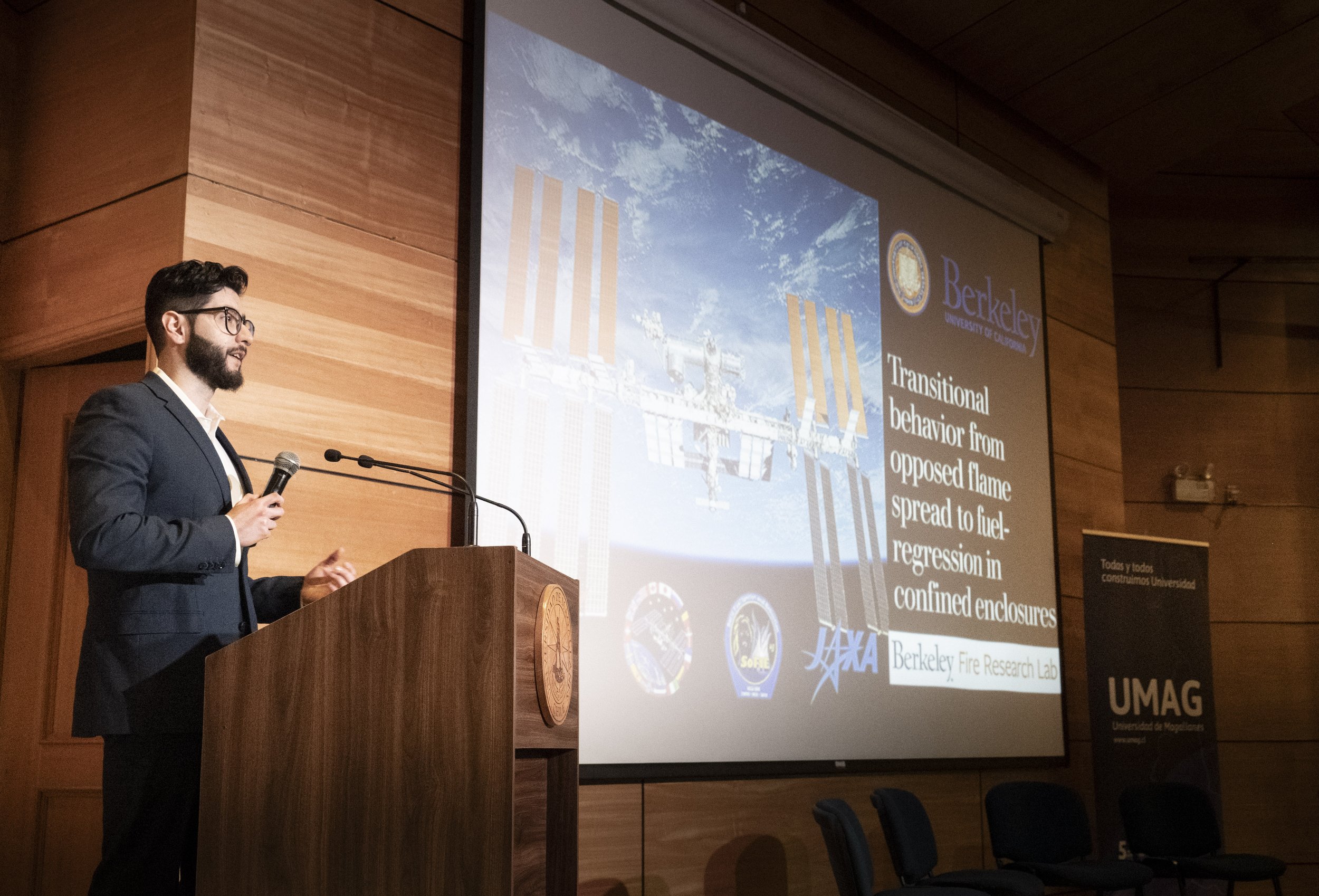fire safety: From wildlands to space
Fire is both a natural force and a critical risk factor, from the lands of California, Chile, Australia and Greece to the confined spaces of spacecraft. The increasing frequency and intensity of wildfires, prolonged droughts, and urban encroachment, demand urgent solutions. Simultaneously, advancing aerospace exploration requires innovative fire safety measures to protect missions and crew in high-risk environments.
ENSDHub is committed to driving fire research and prevention strategies across two critical domains:
Wildfire mitigation: Leveraging insights into ignition, fire spread, and vegetation management to develop sustainable prevention and rapid response solutions.
Spacecraft fire safety: Collaborating with NASA and international agencies to study ignition dynamics, develop fire-resistant materials, and apply machine learning for enhanced fire behavior prediction in microgravity environments.
EXEMPLARY CASE: WILDFIRES IN CHILE
In early February 2024, central Chile faced devastating wildfires, particularly in the Valparaíso Region. These fires resulted in at least 131 fatalities, with over 300 individuals reported missing. The city of Viña del Mar was notably affected, with entire neighborhoods destroyed and approximately 1,600 people left homeless. The Chilean government declared this disaster the worst since the 2010 earthquake, initiating a two-day national mourning period.
Chile’s escalating wildfire challenges reflect a global trend, drawing parallels to regions like California, where the need for innovative fire mitigation strategies has become equally pressing due to similar climate and urban pressures.
California, with its rising wildfire frequency and urban encroachment into fire-prone areas, faces critical challenges in mitigating fire risks. By 2025, strategies such as AI-based early detection systems, sustainable land management, and public-private partnerships will be essential to safeguard communities and reduce economic losses. Our expertise and innovations are geared to support regions like California in implementing forward-thinking fire safety measures.
From the wildfires of Chile to California, the growing challenges of fire resilience demand innovative solutions and global collaboration.
Governments has the challenge to develop strategies around the following matters. ENSDHub supports this challenge in the following concepts:
1. Wildfire mitigation and risk assessment
Analyze local fire risks using data and advanced modeling techniques.
Develop customized fire prevention strategies for fire-prone regions like Chile or California.
Provide advisory on vegetation management, controlled burns, and community planning.
2. Fire safety - Research and innovation
Conduct material flammability testing to improve fire resistance in various environments, from industrial facilities to spacecraft.
Leverage machine learning and AI to model and predict fire spread patterns, enabling data-driven decision-making.
Support policy-making with evidence-based recommendations for fire safety regulations.
3. Training and capacity building
Offer specialized training for emergency responders, government officials, and private sector stakeholders.
Develop simulation-based training programs to enhance readiness for fire scenarios.
Conduct workshops on fire science and engineering tailored to client needs.
4. Collaborative Research Partnerships
Partner with universities, research institutions, and industries to co-develop innovative fire safety solutions.
Facilitate joint research projects on wildfires, urban fire safety, and aerospace fire challenges.
EXEMPLARY CASE: Advancing space Fire Safety Through Machine Learning
Understanding and predicting flame spread over electrical wires is critical for spacecraft safety. Traditional models often fall short when addressing the complex interplay of materials, geometry, and environmental factors. A different apporach integrates domain knowledge with advanced machine learning techniques to overcome these challenges.
Using categorization, clustering, and data augmentation, we’ve achieved significant improvements in predictive accuracy (R² > 0.9), offering robust tools to guide material selection and safety standards in confined environments. This exemplary case for space safety underscores the potential of machine learning to address fire risks in high-stakes settings.
AI can analyze vast datasets to model and predict fire behavior in real-time, taking into account variables such as ignition points, flammable materials, oxygen levels, and microgravity conditions. This allows mission planners to preemptively identify and mitigate risks before they become critical.
AI-powered sensors and monitoring systems can detect early signs of combustion or overheating, such as temperature spikes, gas emissions, or chemical changes. By interpreting this data in real-time, AI can trigger early warnings, giving astronauts or mission control valuable time to act.
Machine learning algorithms can analyze the flammability and performance of materials under space-specific conditions. By optimizing these datasets, AI can guide the selection or development of fire-resistant materials tailored for spacecraft cabins and mission-specific requirements.
AI can control autonomous firefighting systems capable of detecting and extinguishing fires with precision. For instance, AI could direct the deployment of fire suppression agents (e.g., CO₂, water mist) to target the exact location of a fire, minimizing damage and resource use.
AI can facilitate knowledge-sharing across missions by analyzing and compiling data from past aerospace fire events, such as NASA Saffire or SoFIE projects. This global learning loop ensures continuous improvement in fire safety standards.


